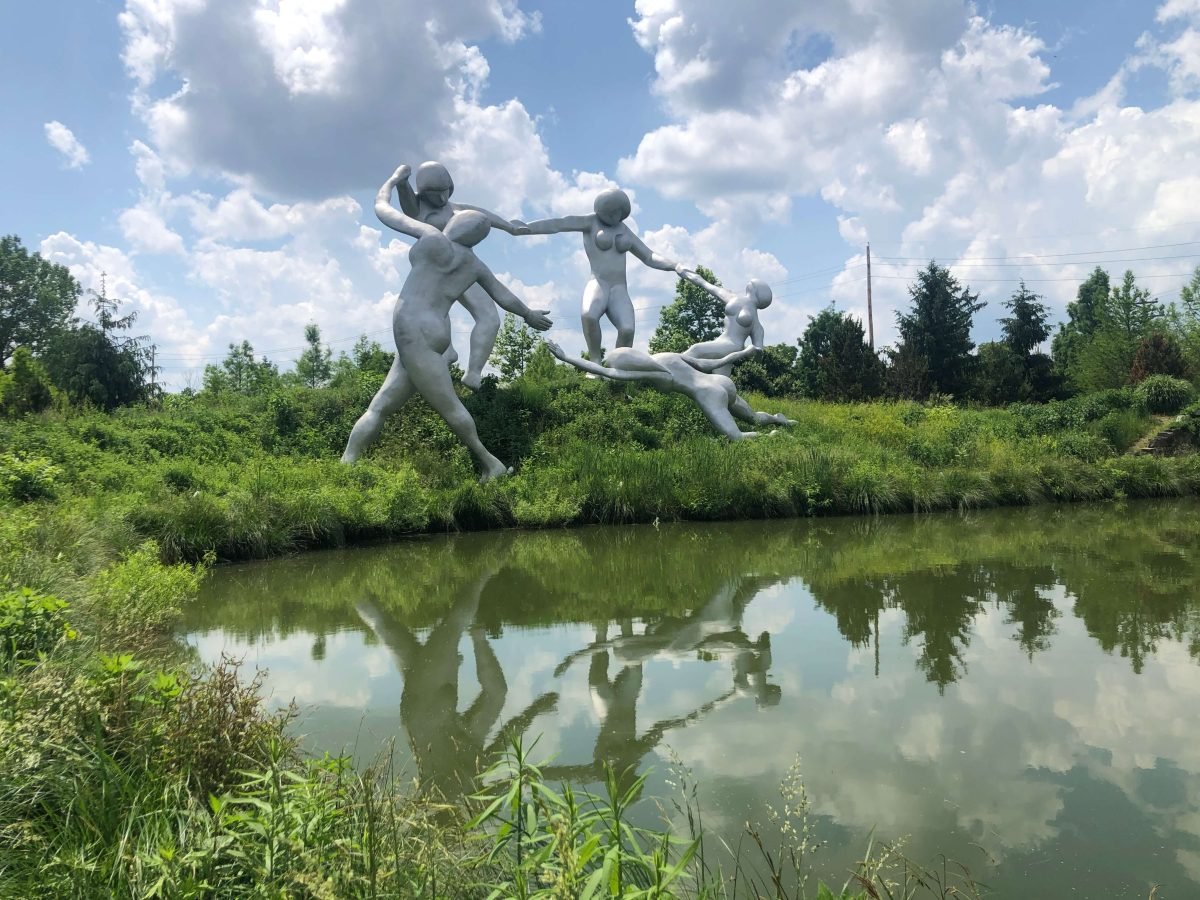Cover image: Seward Johnson, Daydream. Photo by A Scholarly Skater.
Grounds for Sculpture is a 42-acre outdoor art museum and botanical garden in Hamilton, New Jersey. Founded in 1992 by American sculptor Seward Johnson (1930-2020),who was from the Johnson & Johnson family, this sculpture garden is located on the former New Jersey State Fairgrounds. Its large size and masterfully-curated relationship between art and nature offers an experience unlike anything I’d encountered before.
Hey everybody! I’m just reminding you that everything in a museum is subject to change – exhibitions, artworks on display, opening times, and prices. I can only tell you what the museum was like the last time I was there, which might not stay the same. It’s not only that exhibitions change and prices increase; I’ve revisited museums and found their fundamental personalities to be really different from my last visit (or that half their galleries are closed for renovation). I know how sad a disappointing museum visit can be, so I’m reminding you to check everything out on the museum’s website ahead of time.
Art meets nature
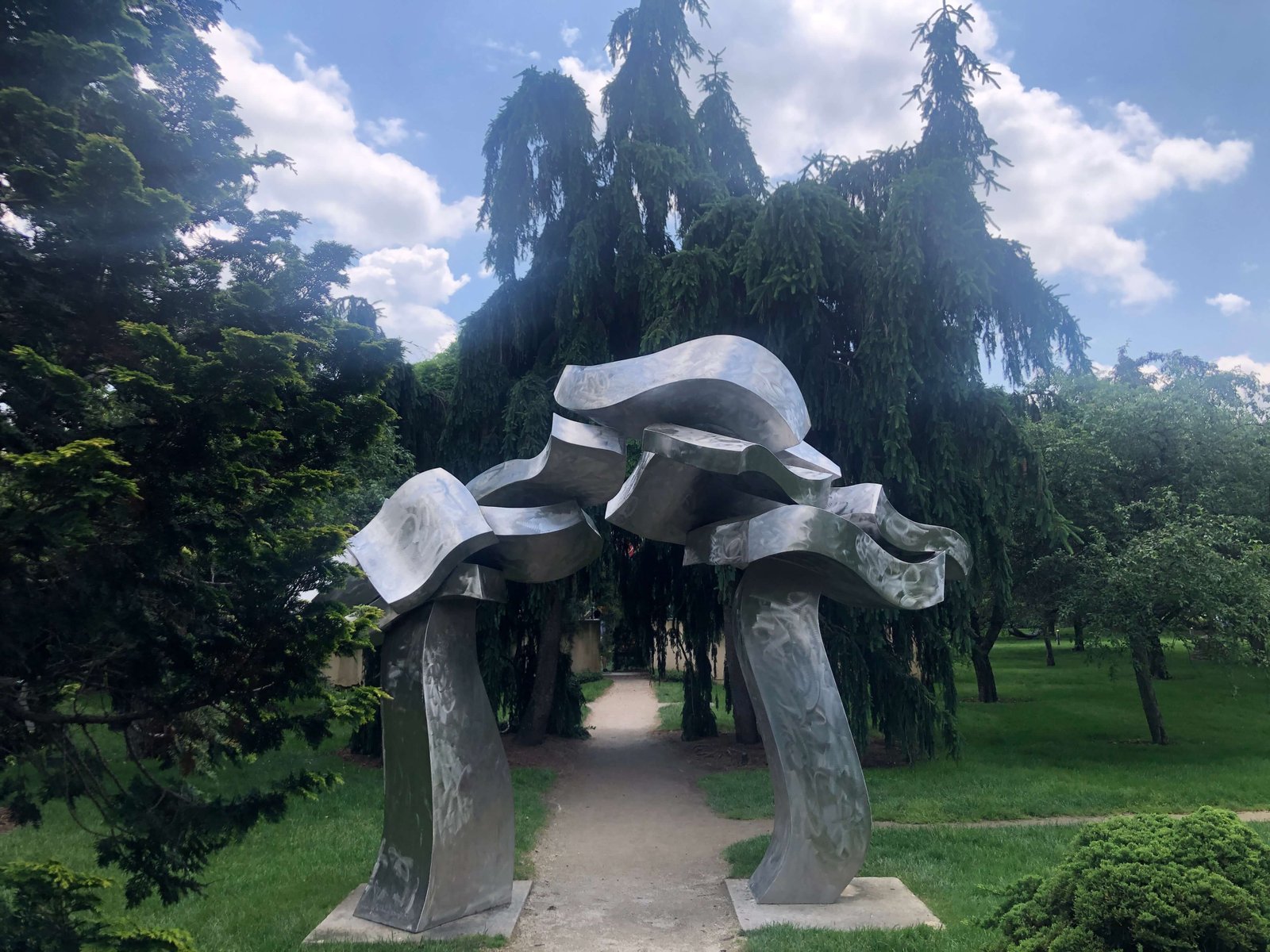
With trees, shrubs, flowering plants, ponds, hills, pathways, some resident peacocks, and more, the landscape elements are wonderful even on their own. But it’s the way they interact with the art that makes Grounds for Sculpture special. Sculpture and nature variously mirror each other, contrast each other, or blend together until it’s unclear where one ends and the other begins.
Everywhere, the landscape determines how you encounter the art, much like traditional curation does in an indoor museum. Some works can be seen from afar in grand vistas that include multiple sculptures at different elevations. Others don’t appear until you turn a corner and are suddenly beside them. You may see a sculpture from an angle at first, only to have it present itself in a different perspective when you least expect it. Some pathways take you up close to interact with the art, while others let you admire from a distance. If you enjoy taking landscape photographs, you’ll love this place!
During my springtime visit, there was lots of greenery and lovely flowers to enjoy, but I imagine things would look totally different at another time of year with different plants in bloom. Art and nature are much more similar than we tend to give them credit for; you can contemplate them in similar ways, and they have some of the same benefits for us. I liked being able to enjoy them both here.
The Sculpture
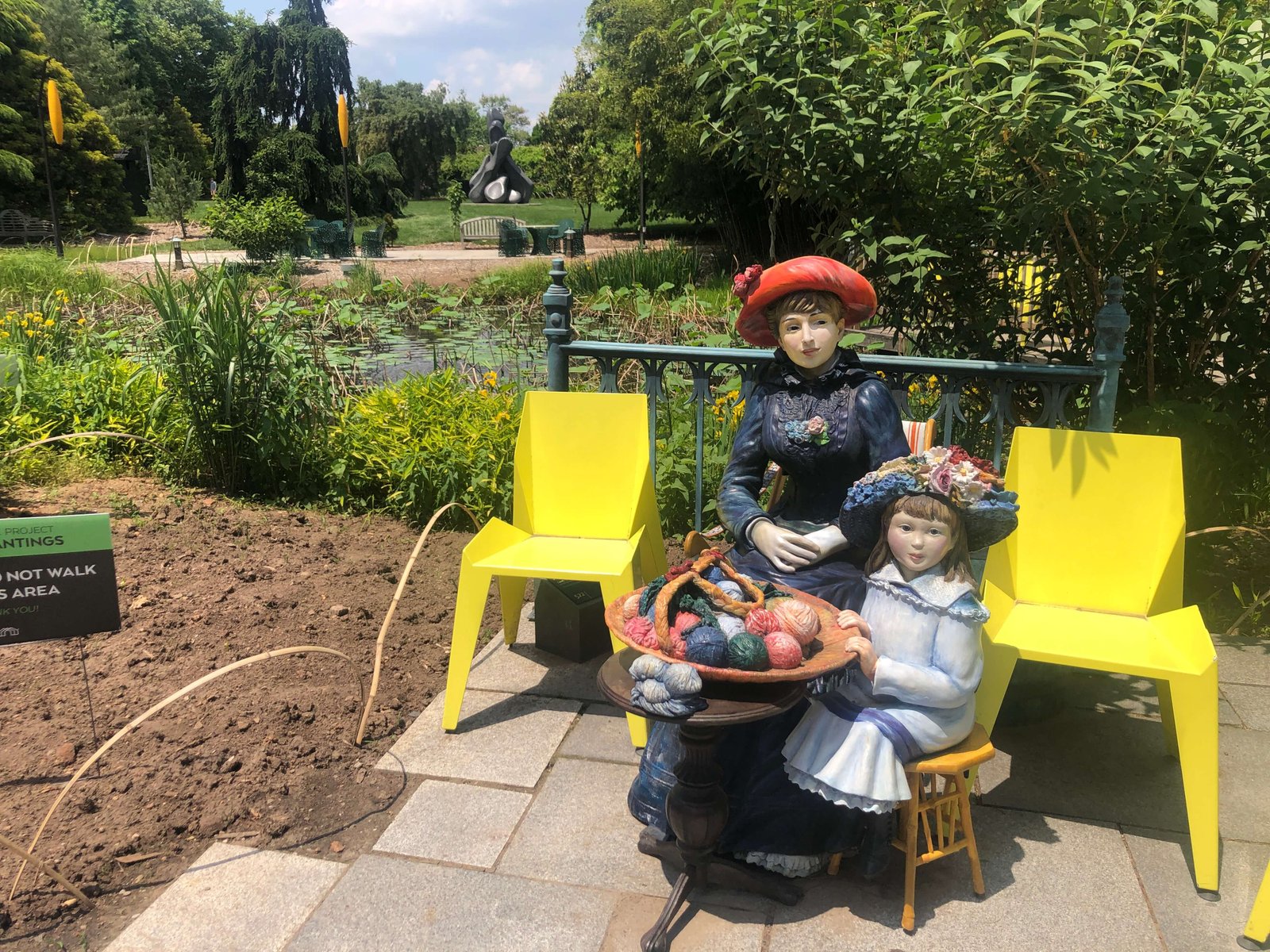
Seward Johnson was known for his naturalistic painted sculptures of people engaged in ordinary activities or mimicking famous paintings. There are plenty of them here, especially those paying homage to the Impressionists. They are definitely a bit kitschy, even slightly unsettling, and they give the place something of a theme-park vibe. However, they can also be surprisingly impactful, because it’s not always clear at first glance who is a sculpture and who is a fellow flesh-and-blood visitor. But if this is still not your cup of tea, Grounds for Sculpture has plenty of alternatives on offer.
There are also tons of other large-scale, contemporary sculptures on display. Generally leaning towards the bold abstract aesthetic often favored for public sculpture, they have lots of varied textures, lines, and forms to enjoy. Though many are clever and memorable, few inspired me towards sustained contemplation. But I think it had more to do with the overall experience than with the art itself. (More on this in a moment.) In addition, a few surviving fairgrounds buildings host changing indoor exhibitions. The Seward Johnson Atelier, which fabricates large sculptures based on Johnson’s and other artists’ designs, is also onsite but not open to the public.
The experience

Given its peaceful, park-like setting, it’s unsurprisingly that Grounds for Sculpture has quite a different atmosphere from traditional museums. It’s much more relaxed and easy-going. You can get up close and personal with the sculptures, and people seemed to enjoy taking photos of themselves interacting with favorite pieces. I was happy to see so many people of all ages seeming completely at ease enjoying the art. If more traditional art museums intimidate you, this would be a great place to begin.
Even for me, the stakes felt lower. I didn’t feel the need to think really hard about what everything meant, because it seemed like it would distract from the overall experience. (For those who feel otherwise, there is an audio guide with some commentary.) While I wouldn’t want a steady diet of this, I found it refreshing to enjoy both art and nature in a relaxed environment. As I mentioned before, there is something of a theme-park vibe that those with traditional museum expectations might not appreciate. However, if you can embrace it for what it is, you can have a really great time like I did.
Practicalities
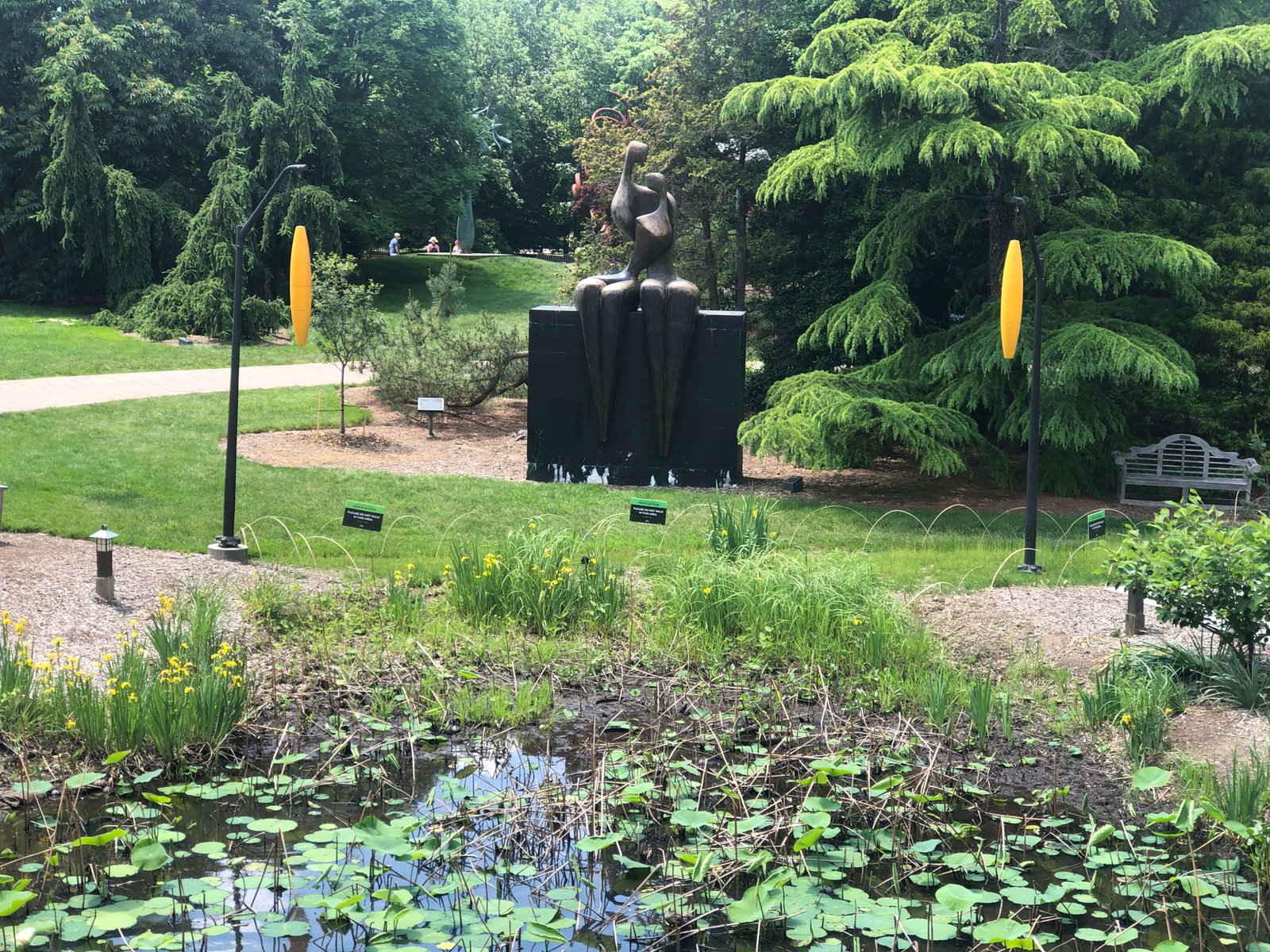
Visiting Grounds for Sculpture involves much more walking than any indoor art museum. (At 42 acres, it’s three times the size of the Louvre!) It includes hills and varied terrain. While the main pathways are smooth, the smaller ones may be mulch or dirt. Thus, in order to be able to explore freely, you’ll absolutely need to wear sneakers, boots, or some other kind of good walking shoes. I was definitely tired by the end and into the next day.
But if you have limited mobility, you can still visit. I saw plenty of people with walkers, strollers, and wheelchairs, and they seemed to get around on the major paths without trouble. A few visitors were also being given tours in little vehicles driven by staff members. Either way, prepare for an afternoon spent outside in the elements by bringing sunscreen, sunglasses, a hat, and water. And you’ll probably want to check for ticks afterwards.
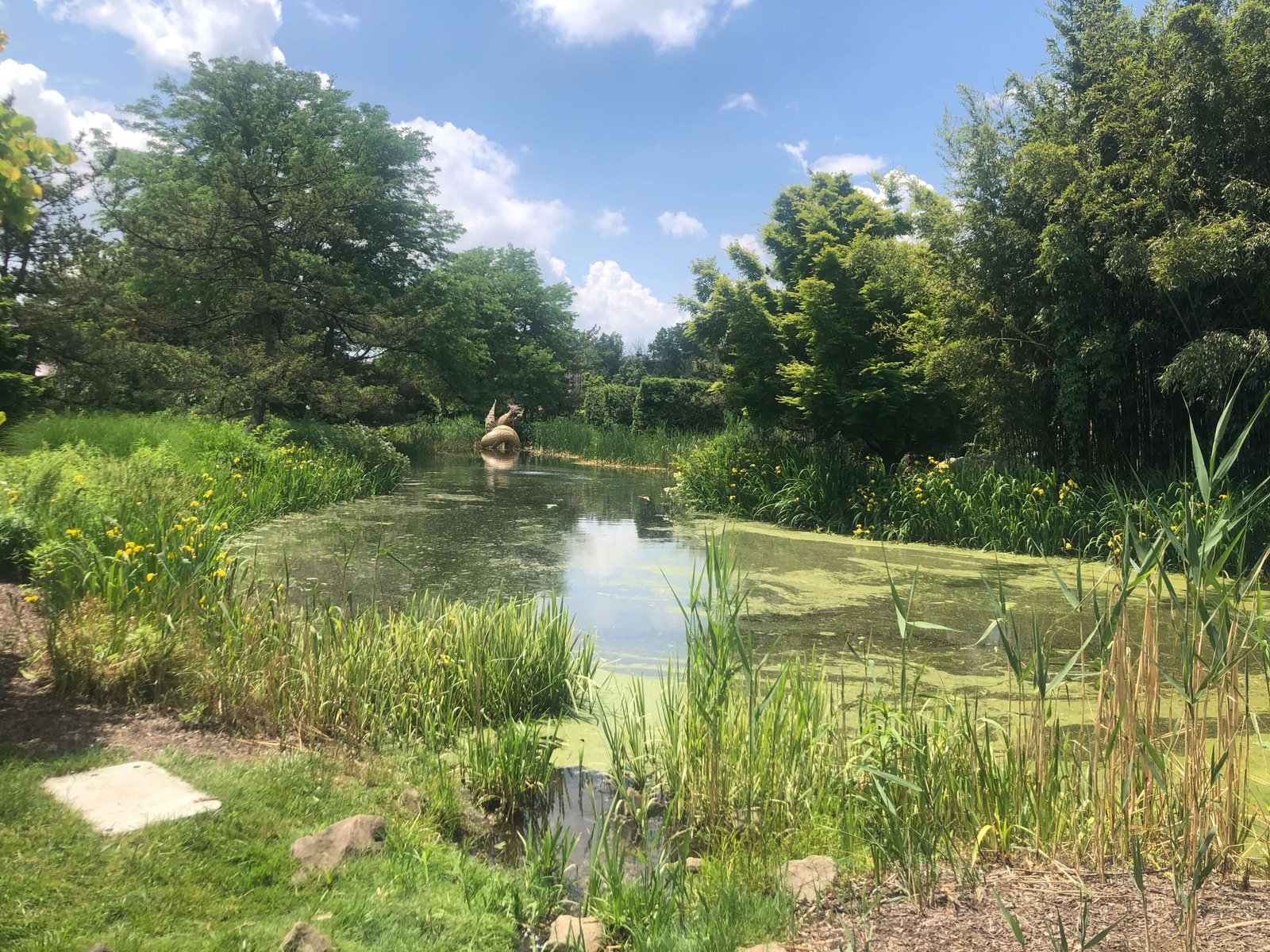
The interactive map shows the major paths and also provides access to the audio guide. If you tap the bullseye at lower right and allow location access, it will show you where you are currently. However, the map doesn’t include much detail, so there’s definitely a choose your own adventure aspect to this. Sometimes, you have to just pick a path and see what happens.
Adult admission tickets are $25 with discounts available for children, seniors, military, and healthcare workers. If you want to visit on a weekend or a day with nice weather, you’ll want to purchase a timed ticket in advance. They sold out on the sunny May Sunday when I visited. But check the forecast before committing, since walking the grounds would be miserable in bad weather or intense heat.
Grounds for Sculpture has a few restaurants and a gift shop. At Van Gogh Cafe, the only eatery open during my visit, I paid $10 for a muffin (delicious) and chai latte (okay). Salads and sandwiches were $15 or more. You can’t bring outside food, except water, onto the grounds. However, you could pack a lunch and go back to your car to eat it. Parking is free and well integrated within the gardens, so it’s easy to stop back at your car in the middle of your visit.
The Review

I highly recommend visiting Grounds for Sculpture for the opportunity to enjoy art and nature in a beautiful landscape environment. This would be a perfect starting point for those who don’t yet feel comfortable (or interested in) visiting more traditional art museums. The sculpture park will probably not appeal to the strictest art purists, but those who can get past conventional expectations and open their minds might enjoy something refreshing and different.
